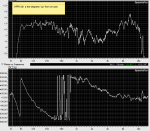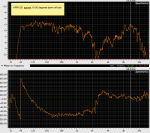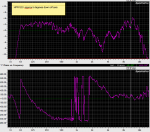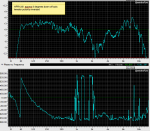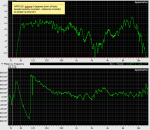Re: Virtual SMAART training: Tell the crossover frequency and type
But that also requires an expert user, since you must know what the average is telling you and what it isn't. The average weights cancellations far more heavily than boosts. Is that meaningful? Usually not.
Smoothing works the way you describe. Spatial averaging not so much. The test,...measure a single speaker up close maybe within 10ft or so if the speaker isn't too large. Do this in a reasonably sized room, doesn't have to be a hall, but a conference room is probably going to be a little too small to get the bigger picture. It's OK if the room is reverberant. That will help the demonstration even more. Now capture 4-6 traces around the room within the coverage pattern of the speaker. Average those together. Compare the average to the nearfield you already captured. What you will find is much of the radical combing from one seat to the next is averaged out and the trace is nearly the same as the nearfield. The nearfield response is indicative of what is equalizable. The averaged response will have a little less up top and a little more down low. The former is caused by air absorbtion (mostly), and the latter is caused by room gain. If you started with a perfect speaker, you would find with the live average, there isn't much for you to do. If you then add that speaker to another one just like it in a 2 wide array, you will find about 6dB more LF which you will have a much clearer picture of with the live average and can then EQ back to flat (in the nearfield, or actually little pink out in the room). Line arrays work on the idea of using interference (combing) to reduce level as you get closer to the array. This usually means that every seat has a little different response. Averaging several captured traces helps a lot to see the "nearfield" response, which in the case of a line array, doesn't exist. Live averaging just speeds it up a bunch.
As Ivan often points out, if you don't like the response in one position, move a few feet away. It changes. The trace is highly influenced by the reflections. The spatial averaging helps ignore the reflections. The argument can be made all day to fix the acoustics for a better behaving room, but that's not the point here. We do want to see the single point responses so we know what's going on, but we don't want to base EQ decisions on those single locations.
As for smoothing. It's OK for trends, but I tend to stay at none or 48th Oct smoothing in magnitude and use whatever it take for Phase. It's good to take the smoothing off the phase and see how messed up it can be but for making timing decisions the trends are important. Having the live IR up and running is a huge gift. It's like cheating.....
Yes, it's very meaningful for the purpose I described above. It can be considered a lie if you misuse it. Even when the correct solution (acoustic treatment) is applied, this is often still a great tool. I personally don't get to make changes to the room and often I don't get to pick where the PA lives. Live spatial averaging has brought my tweaking to 90-95% and correlates to my hearing very well. Even after each individual system is finished, I use it when the entire PA is on with mics around the room but not in symmetrical positions. It has correlated well to where I end up when walking the room with a tablet and making final tweaks here and there. I'm still new to this last part. Only been doing that for about a year.


